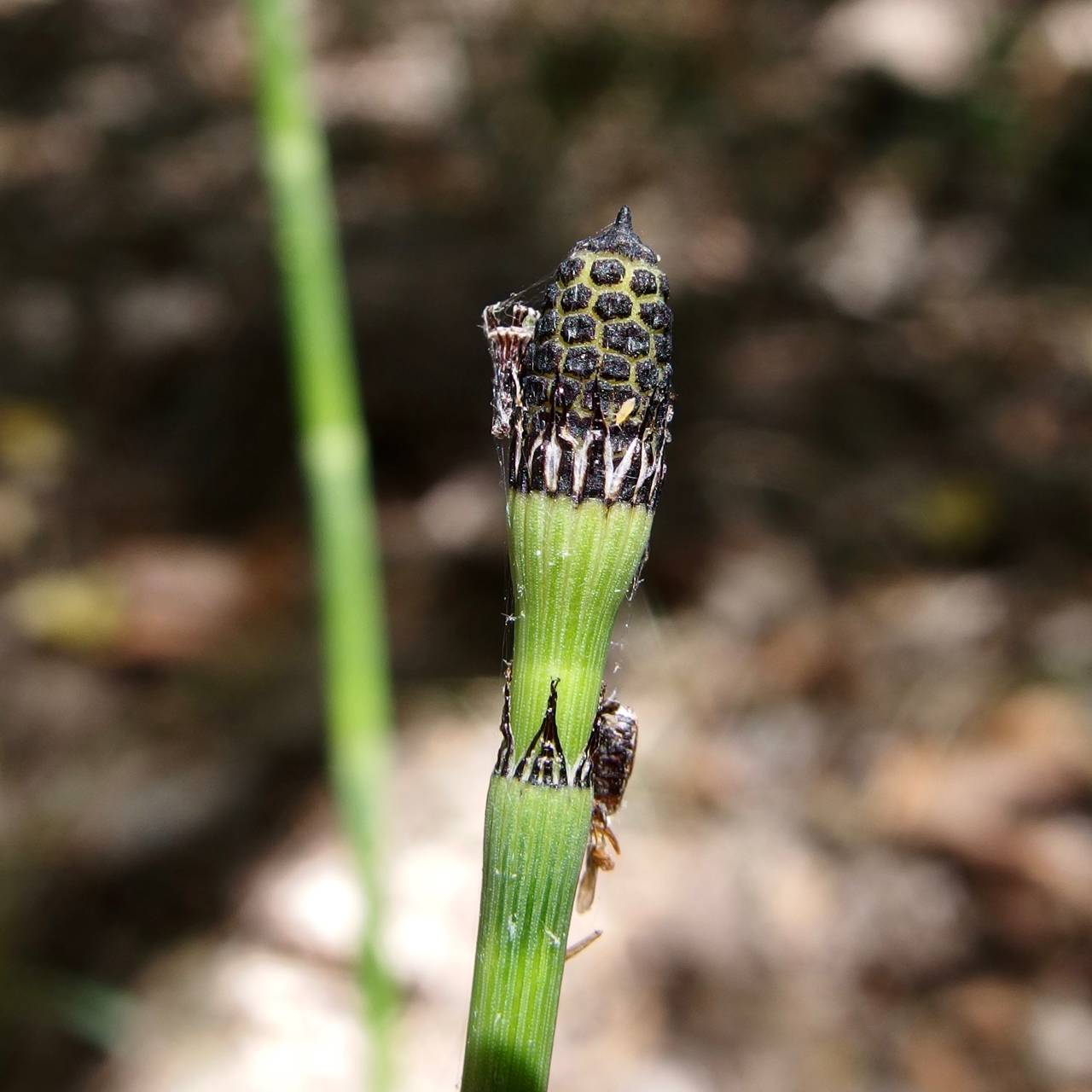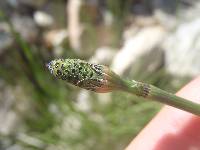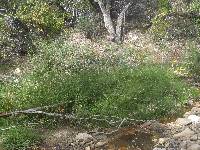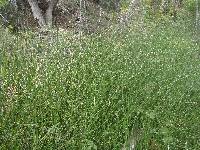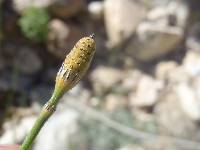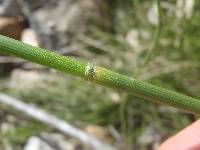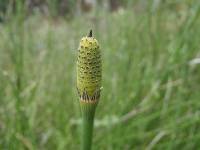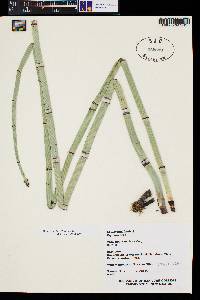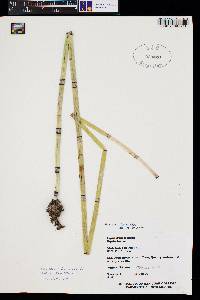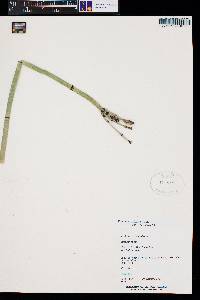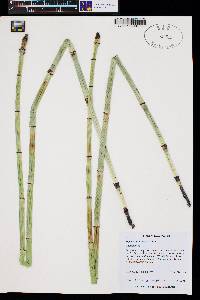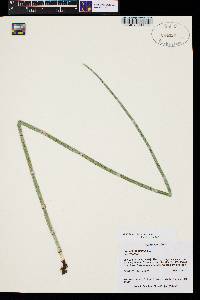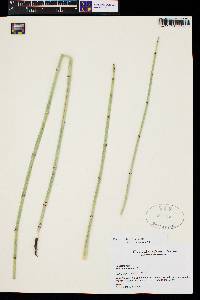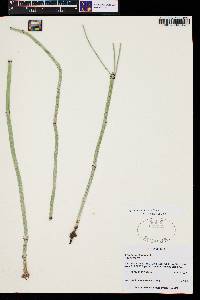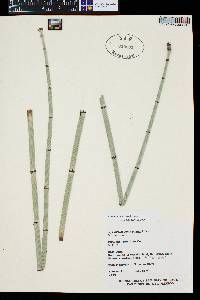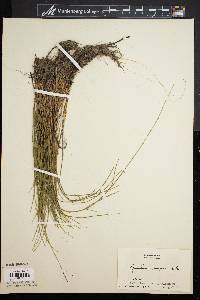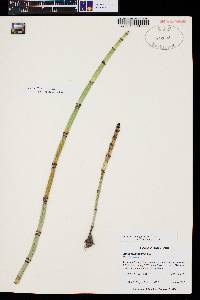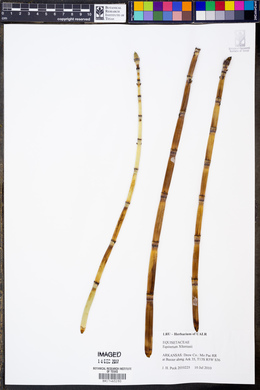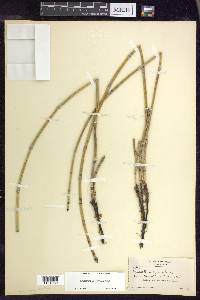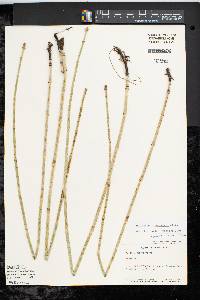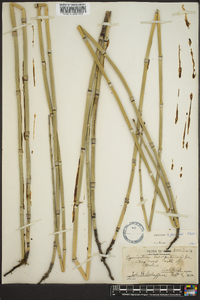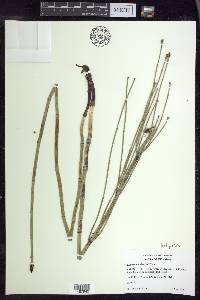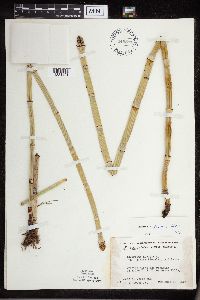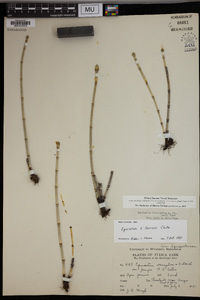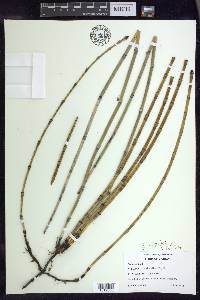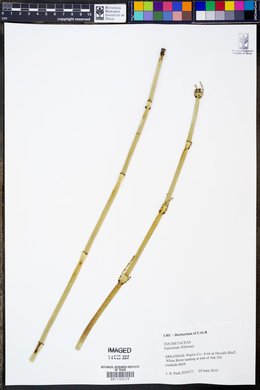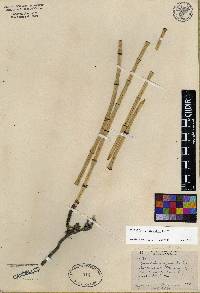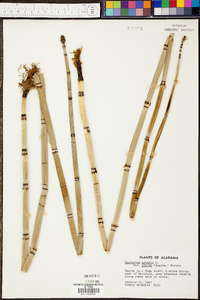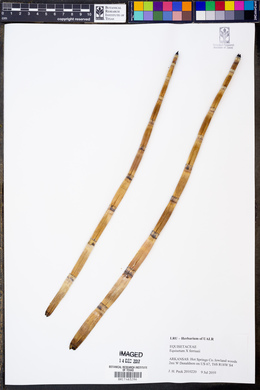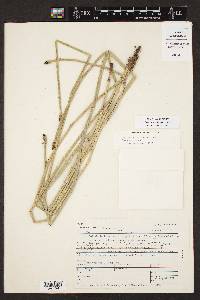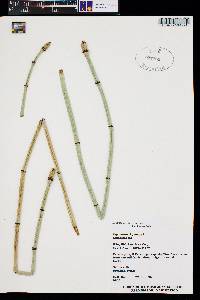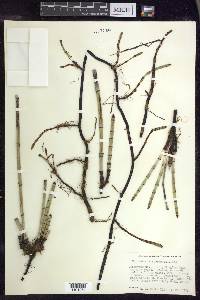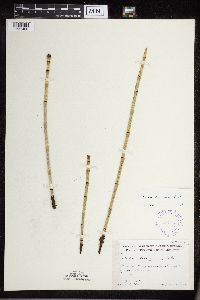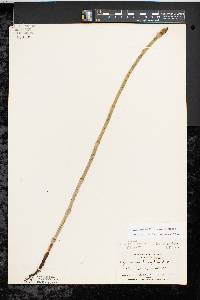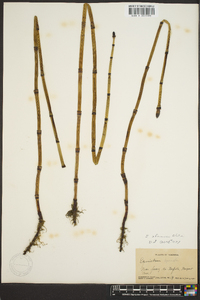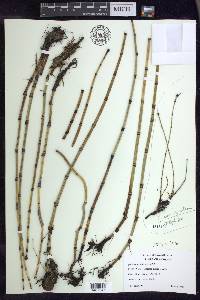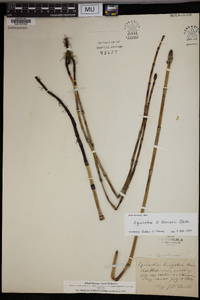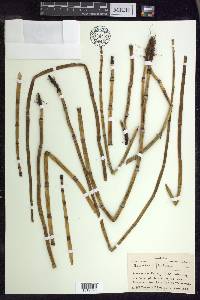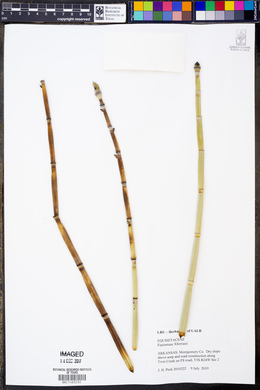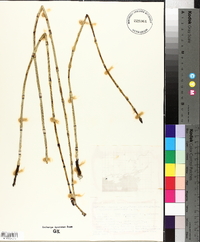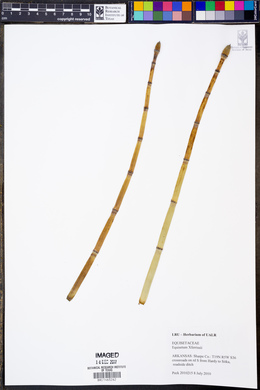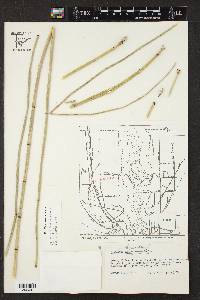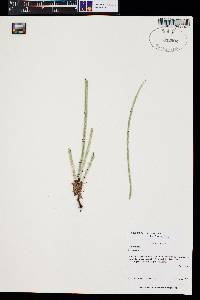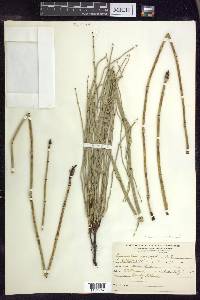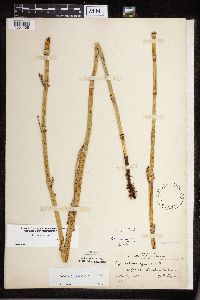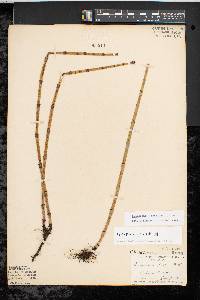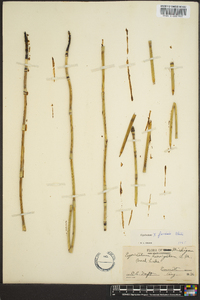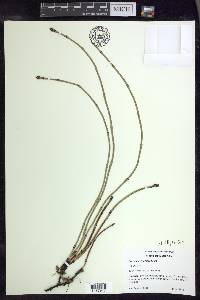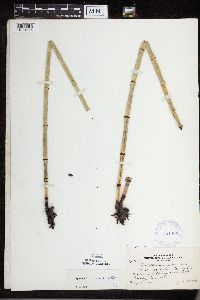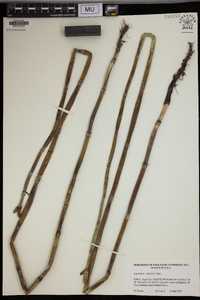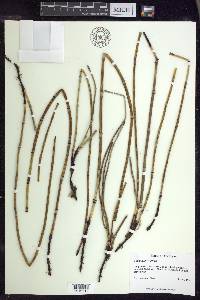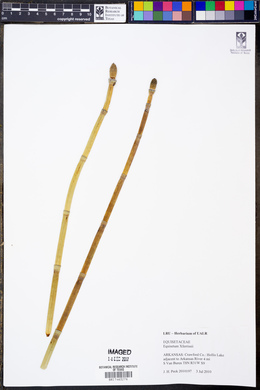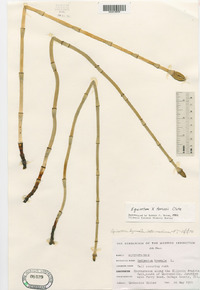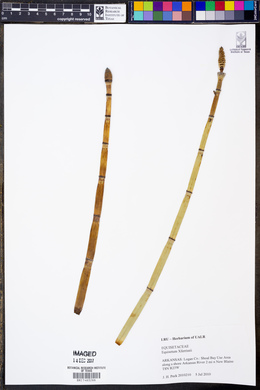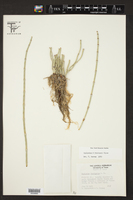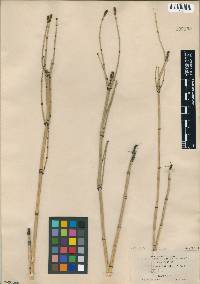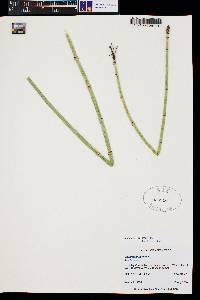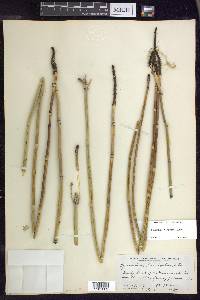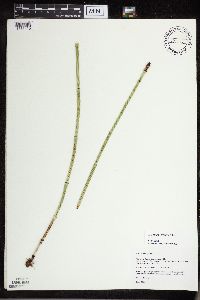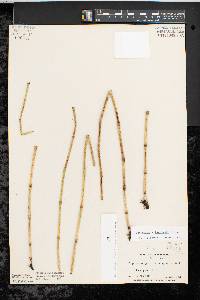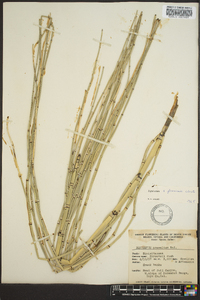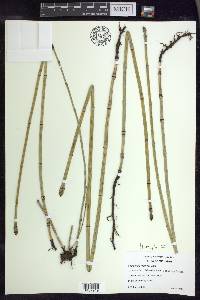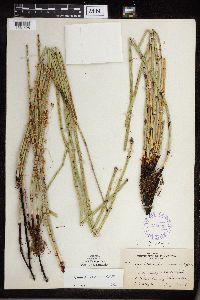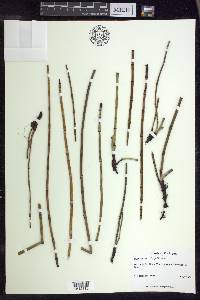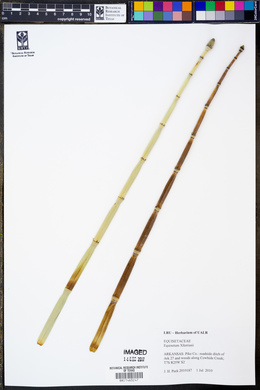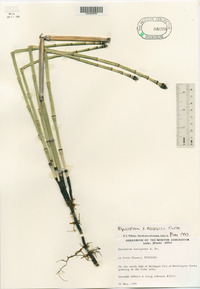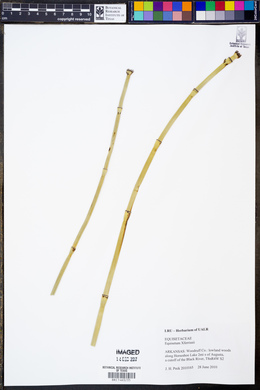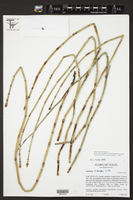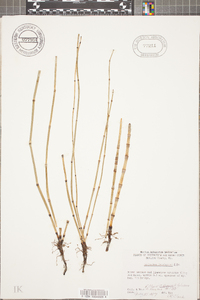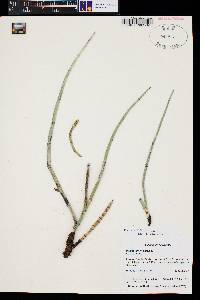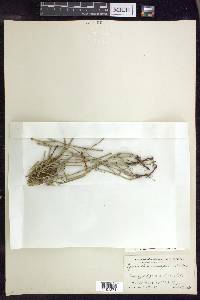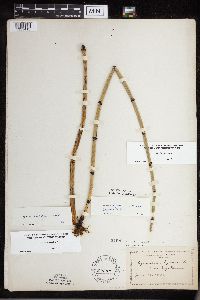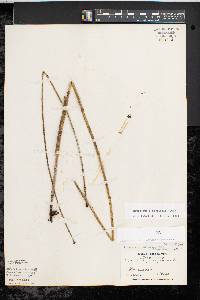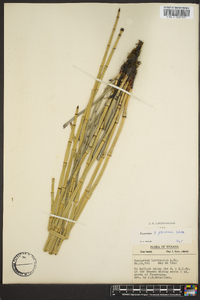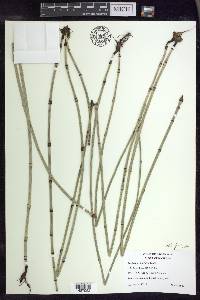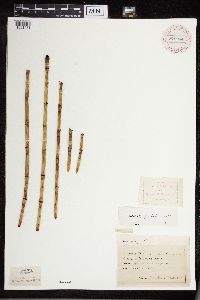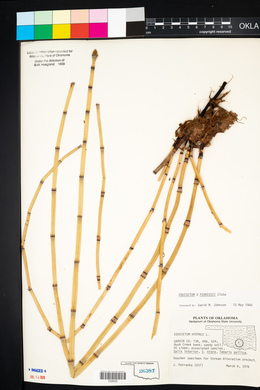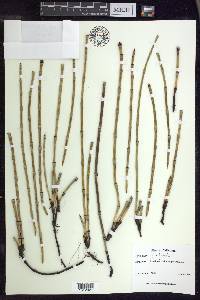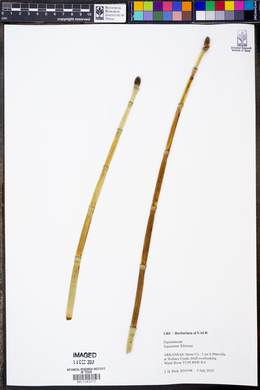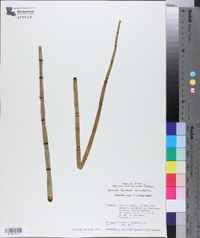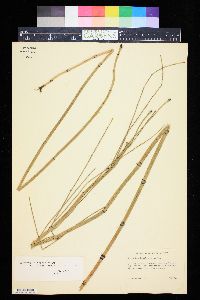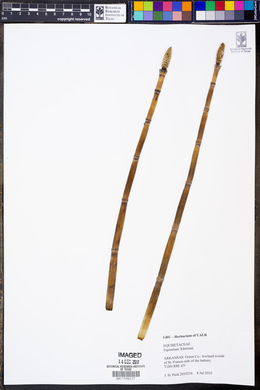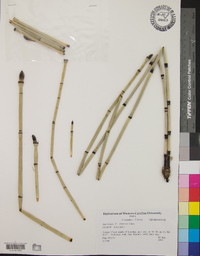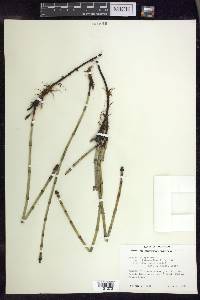Equisetum × ferrissii
|
|
|
|
Family: Equisetaceae
Ferris' Horsetail, more...ferris horsetail
[Equisetum ferrissii Clute, moreEquisetum hyemale var. elatum (Engelm.) Morton, Equisetum hyemale var. intermedium A.A. Eat., Equisetum intermedium (A.A. Eat.) Rydb., Equisetum laevigatum var. elatum Engelm., Equisetum praealtum var. laevigatum (A. Braun) Bush, Equisetum X ferrissii Clute (pro sp.)] |
Aerial stems having basal part persisting over winter, unbranched, 20--180 cm; lines of stomates single; ridges 14--32. Sheaths elongate, 7--17 × 3--12 mm, becoming dark-girdled with age; teeth 14--32, articulate and promptly shed or persistent. Cone apex pointed; spores white, misshapen. Cones maturing in late spring--early summer but spores not shed. Moist lakeshores, riverbanks, roadsides, prairies; 0--2500 m; Alta., B.C., Ont., Que., Sask.; Ariz., Ark., Calif., Colo., Conn., Del., D.C., Idaho, Ill., Ind., Iowa, Kans., Maine, Md., Mass., Mich., Minn., Mo., Mont., Nebr., Nev., N.H., N.J., N.Mex., N.Y., N.C., N.Dak., Ohio, Okla., Oreg., Pa., R.I., S.Dak., Tex., Utah, Vt., Va., Wash., W.Va., Wis., Wyo.; n Mexico including Baja California. The hybrid between Equisetum hyemale and E . laevigatum , E . × ferrissii , was mistaken for E . laevigatum by Schaffner and some subsequent authors. Although sterile, it exists outside the range of E . laevigatum , and apparently it is dispersed vegetatively (R.L. Hauke 1963). Perhaps it has persisted in some areas from a time when the parents were both there. Equisetum × ferrissii has been reported from Maine, New Hampshire, Rhode Island, South Dakota, and Vermont, but I have not seen specimens from those states.
General: Hybrid between E. hyemale and E. laevigatum. Monomorphic stems, evergreen 30-200 cm tall. Leaves: Erect, 14-50 ridged, erect, the surface roughened, usually dark green at maturity, unbranched or with irregular, scattered branches were wounded, these with 6-20 ridges; sheaths as long or slightly shorter than wide, marked with dark basal band, light gray to brown central band, and a dark tip, teeth 14-50 per sheath, 2-4 mm long, gray to black. Sporangia: Sterile hybrid, but bearing a false strobili with a somewhat mucronate tip. Ecology: Found in moist soil along stream banks and rivers, and marshy meadows from 2,500-8,500 ft (762-2591 m). Notes: Distinguished by looking at the sterile strobili, which when broken open will reveal a cottony mass of elaters, but not mature green, globose spores. Ethnobotany: Similar uses to other species in the genus. Etymology: Equisetum is from equus, horse and seta, bristle, while ferrissii is named for James Henry Ferriss (1849-1926) an American collector of land-snails, fossils, ferns, and cacti throughout the West. Sources: Yatskievych and Windham 2008 Yatskievych and Windham 2008 Common Name: horsetail Wetland Status: FACW Rarity: None General: Hybrid between E. hyemale and E. laevigatum. Monomorphic stems, evergreen 30-200 cm tall. Leaves: Erect, 14-50 ridged, erect, the surface roughened, usually dark green at maturity, unbranched or with irregular, scattered branches were wounded, these with 6-20 ridges; sheaths as long or slightly shorter than wide, marked with dark basal band, light gray to brown central band, and a dark tip, teeth 14-50 per sheath, 2-4 mm long, gray to black. Sporangia: Sterile hybrid, but bearing a false strobili with a somewhat mucronate tip. Ecology: Found in moist soil along stream banks and rivers, and marshy meadows from 2,500-8,500 ft (762-2591 m). Notes: Distinguished by looking at the sterile strobili, which when broken open will reveal a cottony mass of elaters, but not mature green, globose spores. Ethnobotany: Similar uses to other species in the genera. Etymology: Equisetum is from equus, horse and seta, bristle, while ferrissii is named for James Henry Ferriss (1849-1926) an American collector of land-snails, fossils, ferns, and cacti throughout the West. Synonyms: Equisetum hyemale var. elatum, Equisetum hyemale var. intermedium, Equisetum intermedium Editor: SBuckley, 2010 From Flora of Indiana (1940) by Charles C. Deam ...... Indiana Coefficient of Conservatism: C = 2 Wetland Indicator Status: FACW |

